What does “eating clean” actually mean?
Whether your goal is to lose weight, gain muscle, have more energy, or simply adopt a healthier lifestyle, you’ve probably heard advice telling you to “eat cleaner.” But what does eating clean actually mean? Does eating clean mean never eating carbs or dessert again? I say no way! Check out the blog to learn how the government describes healthy eating, the real definition of clean eating, and practical tips on how to eat clean.
Hover over the image to pin it for later.
Government Guidelines and MyPlate
The government's MyPlate guidelines, which have replaced the traditional Food Pyramid, offer a great starting point for understanding healthy eating. MyPlate recommends that each meal should resemble a small dinner plate, divided in half. Half of the plate should be filled with fruits and vegetables, with an emphasis on more vegetables than fruit. The other half is to be shared between complex carbohydrates and a serving of lean protein.
And while I think MyPlate is a great starting point for learning portion control and balanced meals, it doesn’t tell the whole story when it comes to what clean eating actually is.
The Definition of Clean Eating
It's crucial to understand that there's no universal dietary formula for everyone. Each of us has different nutritional needs, and what works wonders for one person might not be the best fit for another. Which is why this concept of clean eating can be so difficult to understand, because there are hundreds of nutritional experts out there giving conflicting information. The key is to be in sync with your body's signals and adapt your nutrition accordingly. Your body is your most honest guide when it comes to what you should and shouldn't eat.
Clean eating is about consuming whole, unprocessed foods and avoiding foods that disrupt your body's optimal state of digestion. Disruptive foods can vary from person to person based on food sensitivities, allergies, or even genetics. In general, sugar is one that is inflammatory across the board. For me, the nutritional disruptors that needed to go were soda, coffee, white flour, and white sugar. I also made the choice to limit dairy, pork, and red meat.
While there's no one-size-fits-all approach to clean eating, there are a few general rules that apply to most.
Practical Clean Eating Choices
Each day, try to get most of your daily nutrition from uncooked, unprocessed foods. Know where your foods come from, too; for instance, you want to make sure that you choose a lean source of protein like chicken, turkey, fish, or legumes. Ideally, these should be organic, wild, or free-range protein sources without hormones or antibiotics. If your protein doesn’t contain impurities, you can’t ingest them! If you do choose to eat beef or dairy, choose grass-fed and hormone/ antibiotic-free which is always the healthiest option. It’s important to know the quality of the food you put into your body and where it comes from.
Above and beyond protein, consider adding in these options:
Vegetables: Incorporate up to 24 ounces of vegetables a day, prepared in various ways such as raw, steamed, broiled, or grilled. Get creative with your vegetable choices and try something new.
Fruit: Aim for up to two cups of fruit each day. To make sure that I don’t feel hungry, and to counteract the sugar spike from fruit, I always combine my fruit with a protein like raw almonds, or a tablespoon of organic peanut or almond butter. In fact, my favorite treat, which I save for early afternoon if I get the munchies, is an apple and peanut butter.
Healthy Fats: Aim for around 2 tablespoons of healthy fats each day, like olive or walnut oils, avocados, green olives, or nuts. When it comes to salad dressing, avoid low-fat options, as they tend to contain extra sugar. Instead, opt for a small amount of the real thing.
Salads: Incorporate salads into your daily routine or as much as possible, they are a great way to get healthy greens into your diet and adding a cooked turkey burger or other lean meat provides protein to help you stay fuller longer. The best part about a salad is you can change up the toppings and dressings hundreds of different ways to create variety.
Grains: A nutritional counselor told me that taking grains out of my diet in the beginning was good for my pancreas and would help aid my weight loss. So if you want to go all-out like I did, go off your grains for the first 30 days or longer if you are able and then, if you choose to, add them back in very slowly. This includes whole wheat bread, pastas, and even brown rice. I feel this to be especially important if you have over 100 pounds to release, as I did.
When adding them back into your diet, pay attention to how you feel. Remember everyone’s health journey is unique, so paying attention to what your body is telling you is so important. Do you feel bloated? Are you finding that you crave them? If that is the case, I would remove them completely.
In case this is the first time we’re connecting, I’m Jill, an entrepreneur, speaker, author, and leader inspiring other women to live out their God given purpose by helping them overcome physical, mental, and financial hardships. If you liked this blog post and want more where that came from, here are a few ways we can work together:
Improve your health and lose weight with Zallevo products, the purely sourced supplements that helped me finally experience my own health transformation.
Pursue a work from home income opportunity surrounded by other servant leaders. I’ll coach you on how to grow a wildly successful 1099 business sharing health & wellness products that actually work.
Learn how to overcome food addiction, improve your health, energy, and confidence, and master your mindset through one of my self paced courses.

